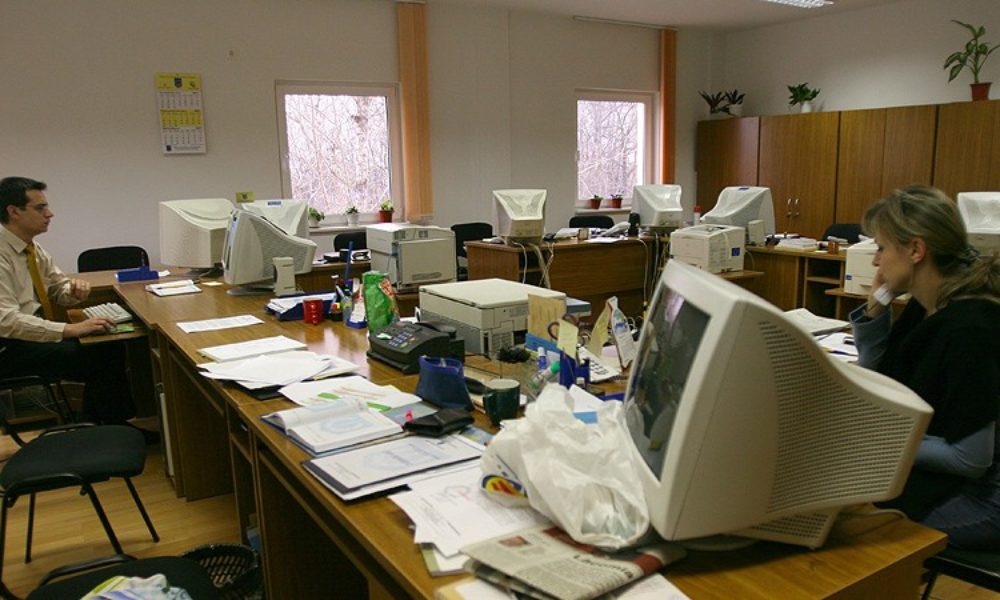How is the world order changed

But what is the « world order » and how is it maintained or violated?
In the language of everyday life, a stable arrangement of elements, functions or relationships is understood. So in the interior we are talking about « tidy society » and his government. But there is no comprehensive government in international relations. Provided that the arrangements between countries are always subject to change, the world is in a sense « anarchical ».
Anarchy, however, is not the same as chaos. Order is a matter of degree: it changes in time.
In the interior, a stable state device can be maintained despite the presence of uncontrollable violence. After all, organized and unorganized violent crime remain a fact in the lives of most countries. But when violence reaches a very high level, it is regarded as a sign of a « failed state ». Somalia may have common language and ethnicity, but it has long been a place where clans are fighting; The « national » government in Mogadishu has little power outside the capital.
German sociologist Max Weber is known for the definition of a modern country as a political institution with a monopoly on the legitimate use of power. But our understanding of legitimate power is based on ideas and norms that can change. Thus, the legitimate order stems from judgments about the power of the norms, as well as the simple descriptions of the quantity and nature of violence in the state.
| As for the world order, we can measure changes in the distribution of power and resources, as well as in compliance with the norms that establish legitimacy. We can also measure the frequency and intensity of conflict with violence. |
The stable distribution of forces between countries often involves wars that clarify a common perception of the balance of power. But the views of the legitimacy of war have changed over time. For example, in Europe in the eighteenth century, when the Prussian King Friedrich the Great wanted to take the province of Silesia from neighboring Austria, he simply seized it. But after the Second World War, countries created the United Nations organization, which defines only the self -defense wars as legitimate (unless the Security Council resolves otherwise).
What can the victory in Ukraine look like
When Russian President Vladimir Putin invaded Ukraine and occupied her territory, he claimed to be acting in self -defense against NATO enlargement to the east. But most UN members voted to condemn his behavior, and those who did not do it – such as China, North Korea and Iran – share his interest in balancing American power.

Although countries can file complaints against others in international courts, these tribunals do not have the capacity to apply their decisions. Similarly, although the UN Security Council may authorize countries to apply collective security, it rarely did it. Each of the five permanent members (UK, China, France, Russia and the United States) has the right to veto, and they did not want to risk a big war. The veto functions as a fuse or switch in the electrical system: it is better for lighting to extinguish than to burn the house.
In addition, the world order may become stronger or less due to technological changes that change the distribution of military and economic power; Internal social and political changes that change the foreign policy of a large country; Or transnational forces such as ideas or revolutionary movements that can spread beyond the control of governments and change the public perception of the legitimacy of the dominant order.
For example, after the Westphalian peace of 1648, which puts an end to European religious wars, the principle of state sovereignty is established in the normative world order.
The hoping Biden will refuse to forget the Democrats’ crash of 1968.
But in addition to changes in the principles of legitimacy, changes in the allocation of power resources are also observed. During World War I, the United States became the largest economy in the world, allowing them to determine the outcome of the war through military intervention. Although US President Woodrow Wilson is trying to change the normative order with his League of Nations, the US domestic policy pushes the country to isolationism, allowing the axis forces to try to impose their own order in the 1930s.
- After the Second World War, half of the global economy fell, but their military power was balanced by the Soviet Union, and the UN regulatory power was weak.
- After the collapse of the Soviet Union in 1991, the United States enjoyed a short « same -pole moment », but spread too much in the Middle East, while allowing poor financial government, which culminated in the 2008 financial crisis.
- Believing the US is in decline, Russia and China have changed their own policies. Putin ordered an invasion of neighboring Georgia, and China replaced Dun Xiaopin’s cautious foreign policy with a more excessive approach.
- Meanwhile, China’s strong economic growth has allowed it to reduce the difference in power with America.
Will the Trump Administration maintain this unique source of continuing power of America, or is Kalas right that we are at a turning point? The years 1945, 1991 and 2008 were also a turning point.
If future historians add 2025 to the list, it will be the result of US policy – a self -inflicted wound – not some inevitable secular development.
© Project Syndicate




:format(webp)/s3/static.nrc.nl/images/gn4/stripped/data133212425-ae69bf.jpg)


